AI is already displacing jobs in some sectors. What can workers do to prepare?
As generative AI transforms industries, workers are facing growing uncertainty with widespread job disruptions, uneven reskilling efforts and the urgent need to adapt in a rapidly evolving labour market.
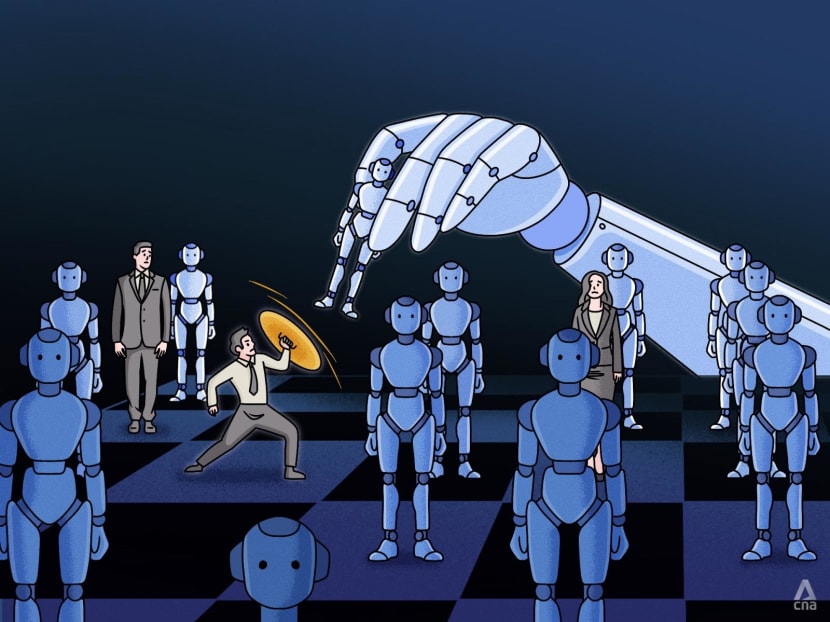
Workers will need to continually upskill to protect themselves from the threat of becoming redundant, due to the advance of artificial intelligence technology, a labour economist said. (Illustration: CNA/Nurjannah Suhaimi)

This audio is generated by an AI tool.
For many people, artificial intelligence has already become a part of life, helping out with repetitive, menial tasks or quick research and generating everything from job application letters to funny memes. It has also made a big positive impact in several industries including healthcare, finance and technology, making it possible for people in these fields to innovate quickly and improve their services and offerings.
Yet, as the technology advances, its hidden costs are coming into sharper focus as well. In a two-part series, CNA TODAY examines some of these covert influences and how individuals, companies and governments may mitigate the adverse impact. First up, a look at how AI is displacing job functions across various industries and what workers can do to adapt.
For over 15 years, freelance consultant Jacky Tan enjoyed helping mainly small- and medium-sized enterprises raise their profiles through marketing campaigns.
However, his business, like most others, was hit when the COVID-19 pandemic took a toll on the economy. When consumers were not spending and goods were not moving, marketing became the last priority for most firms.
And even after the pandemic ended, his business never recovered because a new disruption hit: Generative artificial intelligence (AI).
“It was almost overnight,” the 43-year-old said, referring to the AI that can generate new content such as text, images, videos and music. The most common example is the chatbot ChatGPT, which is powered by this technology.
As prospective clients became convinced that they could produce their own copywriting and content marketing using generative AI, they either turned down Mr Tan's pitches or used the AI tool as a bargaining chip to get more for less.
“Some (prospective clients) will sort of ‘threaten’ us by saying that if we don’t take the lower offer, they will just use AI to do the marketing and writing work for them.”
Mr Tan capitulated to their demands a couple of times, but always ended up terminating the projects because the meagre sums they were paying did not justify the work he was doing.
After about seven months without work, he decided to call it quits.
In late 2023, he decided to start a full-time home-based food business, building on the passion for cooking he had developed during the pandemic. He has not looked back since.
“Initially, I didn’t think of doing a food business at all – until one day, I accepted that AI had taken over my job.”
He is now the boss of CheekyDon, which sells Japanese rice bowls.
Mr Tan is far from being a rare casualty in a job market that has lately been shaken up and reshaped by generative AI.
For instance, technology companies such as ByteDance and Meta, which own social media platforms TikTok and Facebook respectively, have both announced plans to lay off workers, either to replace their roles with generative AI or to redirect resources so that they can double down on AI-related investments.
Media reports indicated that the layoffs at both companies reached their Singapore offices in February.
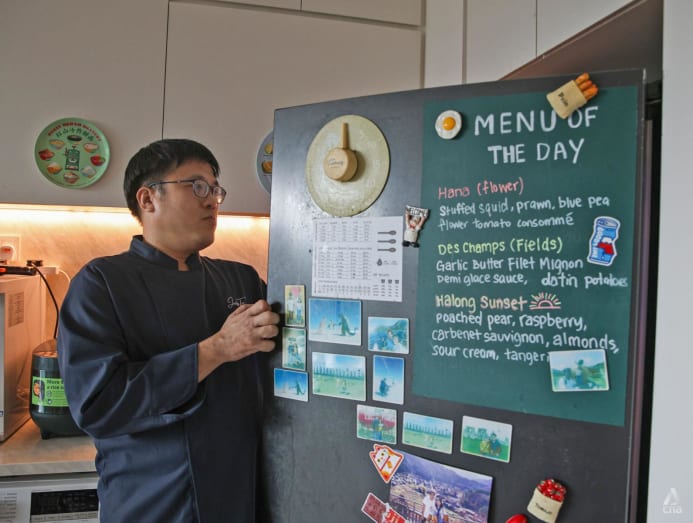
More recently, Mr Piyush Gupta, then chief executive officer of Singapore’s DBS Group, said that the bank is projected to shrink its workforce “by about 4,000 or 10 per cent”, a move that will specifically affect contract and temporary workers, as AI is expected to increasingly take on roles carried out by humans.
The bank told CNA TODAY that this will come from natural attrition as AI "could reduce the need to renew" the temporary and contract roles once they are completed.
At the same time, Mr Gupta – who stepped down on Friday (Mar 28) – said that he expected 1,000 jobs to be created due to AI.
His comments echo statements that have been reiterated by many tech leaders driving the AI revolution: That while AI will disrupt certain roles, it will also produce new ones and this could even lead to a net gain in jobs overall.
Still, this may come as cold comfort to workers who will lose their jobs to AI. Furthermore, the new jobs created in the wake of the AI revolution are unlikely to benefit all workers equally due to disparities in skills.
Indeed, it is a disruption with such significant ramifications for the global workforce that it was among the talking points during the G7 Summit in Italy last June, where leaders recognised "the need to make sure (AI) enables increased productivity, empowers workers and creates inclusiveness and equal opportunities”, an article on the World Economy Forum (WEF) site stated.
“Leaders agreed to launch an action plan on using AI in the world of work, and to step up coordination towards a shared understanding of risk management and advance international standards for AI development and deployment,” the article added.
A WEF projection in its Future of Jobs report in January stated that 11 million jobs will be created due to AI and information processing technologies from 2025 to 2030. In the same period, though, nine million jobs are expected to be displaced.
The report does not detail the jobs that will be displaced or created specifically with links to AI.
However, it does indicate overall that job holders such as big data specialists, financial technology engineers, as well as AI and machine learning specialists are roles with the highest projected percentage growth during this period.
At the same time, positions such as data entry workers, graphic designers and accountants count among the largest declining jobs.
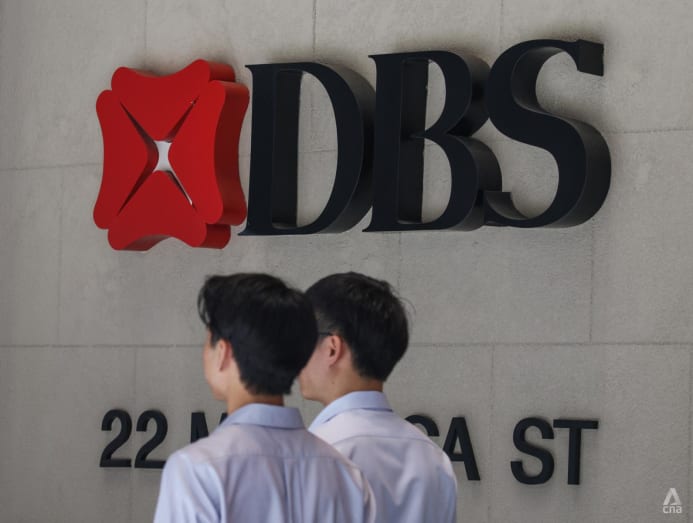
How is it that a technology touted to enhance workers' productivity will likely end up displacing millions of workers instead?
Dr Kelvin Seah, a labour economist from the National University of Singapore (NUS), said that it all comes down to a mismatch between employees’ current skills and the skills that companies need for alternative roles within the business.
“Some of those other (new) roles may require a very different set of skills that the existing personnel do not possess. Even with attempts at retraining, it could still be difficult for these staff members to fully acquire those skill sets,” he added.
Hiring new workers already equipped with the desired new skills may also be faster than retraining existing employees, some analysts said.
However, there may be limits to this strategy, particularly in a tight labour market such as Singapore, where companies are clamouring for workers within a scarce talent pool.
On their part, workers should continuously upskill to mitigate the risk of getting replaced by AI, the analysts suggested.
This can be achieved by updating technical skills that can make workers relevant in handling AI-related roles in the future, or by focusing on soft skills such as human relations and strategic thinking, which may not yet be replicable by technology.
THE MOST AFFECTED JOBS
A global survey of 11,000 executives included in the WEF's Future of Jobs report found that 41 per cent expected to downsize their workforce as AI capabilities to replicate roles expand.
This was even though they also anticipated hiring new talent with AI-relevant skills.
Roles likely to be affected by AI tend to be those that are highly structured, repetitive or involving synthesis of information, economic and human resource experts said.
The ramifications will thus vary from industry to industry, depending on the concentration of such roles. However, technology, banking and finance sectors are among those commonly highlighted by the experts interviewed by CNA TODAY.
Mr Jonathan Lasenby, from global executive recruitment firm Ethos BeathChapman, said: “AI is most likely to have an impact on industries and roles that involve highly structured, repetitive and rule-based tasks, with sectors such as manufacturing, technology, healthcare, as well as finance and accounting facing significant disruption due to the predictable and routine nature of many of their core functions.”
Mr David Blasco, country director at recruiter Randstad Singapore, said that in banking and finance, roles in customer service, compliance and risk management are at higher risk of such digital disruption.
“AI will be increasingly used for tasks like automated customer support via chatbots and advanced algorithms for credit risk assessment and compliance surveillance.”
Manufacturing and logistics are also vulnerable to automation due to their high levels of data processing and repetitive tasks, but changes in these sectors can be slower due to higher capital involved and a more complex integration, Mr Blasco added.
These are not merely projections on manpower shifts; numerous examples abound of companies, particularly in finance and tech, already making such moves or announcing their intent to do so in the near future.
Aside from the examples of ByteDance and Meta, language-learning software firm Duolingo in January 2024 chose not to renew about 10 per cent of its contractors.
“We just no longer need as many people to do the type of work some of these contractors were doing. Part of that could be attributed to AI,” the firm told news agency Bloomberg.
In November 2024, chief executive officer Arvind Krishna of computing giant IBM announced that the company would pause hiring for roles that could be replaced by AI.
He said that he could “easily see 30 per cent“ of non-customer-facing roles being replaced by AI in the next five years.
Closer to home, Mr Anthony Tan, chief of ride-hailing firm Grab, said earlier this month in a media interview: “Humans who don’t embrace AI in a company will be replaced by humans who embrace AI.
“The same will apply to companies and I really believe that if you were to embrace it, it not only makes you superhuman, it makes your company superhuman.”
Back in June 2023, in an email announcing a round of layoffs affecting 1,000 workers, Mr Tan said to his employees that Grab must adapt to the environment in which it is operating, referring to the rising cost of capital and generative AI “evolving at breakneck speed” among the changes it was facing.
Grab declined to comment when CNA TODAY asked whether these remarks indicate any past or future retrenchment plans linked to AI.
Such job churn and losses go beyond the tech realm.
Bloomberg reported that Morgan Stanley, a Wall Street bank, is planning to cut about 2,000 employees later this month, with a small proportion of them due to AI and automation.
Citigroup in a report last June estimated that about 54 per cent of jobs across banking have high potential to be automated.
In a more alarming report in January, Bloomberg Intelligence said that based on a survey of chief information and technology officers from banks, global banks are expected to cut as many as 200,000 jobs in the next three to five years as AI takes over the roles that human workers are now performing.
Many reports offer varying mid-term estimates and projections, but analysts said that the true impact of AI on job losses and workforce shifts remains difficult to predict – at least for now.
One factor for this uncertainty is that companies that had publicly announced plans to replace workers with AI received a lot of flak, hiring experts told Bloomberg last year.
As a result, other companies with similar plans are likely to implement these changes more discreetly, resulting in an under-reporting of such numbers.
Furthermore, AI’s capacity to perform tasks is evolving rapidly, so some companies are taking a wait-and-see approach before making long-term hiring decisions, experts told CNA TODAY.
“At this stage, the nature of AI jobs is still fluid – some roles may emerge as distinct specialisations, while others might merge into existing functions,” Mr Lasenby the recruitment professional said.
“The full impact will only become clearer as AI adoption matures and businesses determine the most effective ways to integrate these technologies into their operations.”
He also noted that companies make workforce decisions based on multiple factors. Thus, it is important “not to confuse AI-driven workforce changes with broader trends or corporate strategies”.
In many cases, the current situation reflects a period of “right-sizing”, following significant over-hiring in 2022 as the world began to emerge from the pandemic, he added.
This appears to be the case for Meta, based on what some of the retrenched workers in Singapore told CNA TODAY on the condition of anonymity.
An ex-employee said that at least one AI engineer was let go during the latest exercise last month. Some of these retrenched workers, herself included, had fared well and received positive feedback during their recent performance reviews, she added.
Her experience reflects those of other former Meta employees mentioned in media reports elsewhere, about well-performing staff members being laid off in Meta’s other offices.
These anecdotes appear to contradict Meta's CEO Mark Zuckerberg’s public assertion that the company planned to lay off its lowest-performing employees in order to focus more on investing in AI.
Meta did not respond to CNA TODAY’s request for comment.
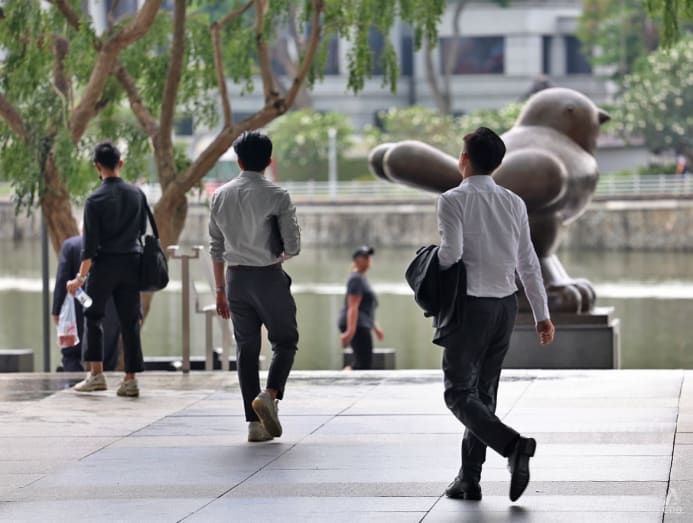
THE FOURTH INDUSTRIAL REVOLUTION
AI has been hailed by some observers as a driver of the Fourth Industrial Revolution.
The First to Third Industrial Revolutions were marked respectively by mechanisation, electricity and better connectivity, and a shift to an economy centred on information technology.
Although all the revolutions have led to job disruptions, the key difference this time round is the breadth and scale of these changes, analysts said.
Associate Professor Walter Theseira from the Singapore University of Social Sciences said that for instance, previous forms of automation by machines tended to be limited to specific tasks or roles.
“It looks like AI is able to replace a far more general range of tasks than previous technologies have,” the labour economist added.
He cited the example of phone-operated customer service, where automation previously allowed customer calls to be routed in certain ways by selecting different menus.
“What people are trying to do with AI today in customer service is to completely replace the human agent as far as possible.”
This is done through AI bots that directly answer questions asked by the customer.
More importantly, where previous industrial revolutions and job disruptions through automation tended to target low- and medium-skilled jobs, AI today is set to disrupt jobs that are considered high-skilled, Assoc Prof Theseira noted.
Mr Lyon Poh, partner and head of corporate transformation at consultancy firm KPMG Singapore, said: “Even in non-routine occupations, certain aspects of work can be enhanced or streamlined by AI.”
He shared the following list of occupations experiencing the highest proportion of task automation:
1. Authors, writers, and translators (43 per cent automation)
2. Programmers and software development professionals (26 per cent)
3. Public relations professionals and communication directors (25 per cent)
4. IT user support technicians (23 per cent)
5. Graphic designers (15 per cent)
6. Personal assistants and other secretaries (11 per cent)
7. Legal professionals (11 per cent)
Mr Samir Bedi from professional services firm EY said: “While routine, rule-based tasks often found in entry-level roles are the most susceptible to automation, AI is also reshaping traditionally high-skilled professions such as accounting, law and healthcare."
Mr Bedi, the firm's people consulting leader for the ASEAN region, added: “At both ends of the spectrum, AI is changing the nature of work by handling repetitive tasks, enabling professionals to focus on more strategic and value-added responsibilities.”
Underlying all this, though, is the premise that AI is meant to increase productivity even without increasing manpower headcount.
Thus, on balance, such AI disruption could be good for a labour-constrained market such as Singapore, Assoc Prof Theseira said.
Mr Christopher Fong, an entrepreneur with in-depth knowledge of the tech industry, said that in the long term, having workers here who are equipped with AI-related skills would be better overall for the economy.
“Singapore is very expensive. If I’m a CEO of an international company looking at costs, I might source for talent from elsewhere that is cheaper,” the founder of professional networking platform Key added.
“But if I want to look for experienced, productive talent, I may want to look at workers who can co-pilot with AI and be more productive.”
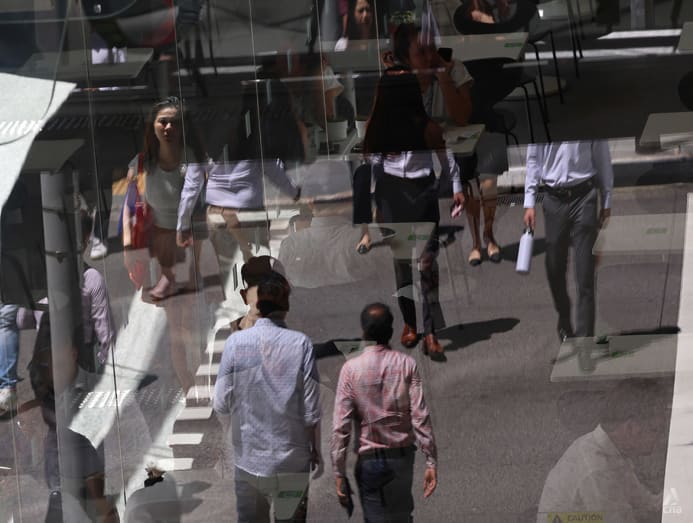
IS YOUR JOB AT RISK?
A Singaporean in his early 30s working at a regional tech firm, who wanted to be identified by the pseudonym Thomas, said that he has recently become more worried about his role being replaced by AI.
He declined to be identified because he is relatively new in the company and did not get his employer's approval to speak to the media.
“It was made known a couple of months ago that the company has started to develop a comprehensive AI system capable of optimising desired outcomes more robustly compared to employee-made decisions,” the data analyst said. He has been working at the company for about a year.
“The possibility of retrenchment or irrelevancy is definitely creating some anxiety.”
Indeed, anxiety seems to be a pervasive concern among many employees, as highlighted by recent surveys.
Recruitment agency Reeracoen’s survey of 400 professionals in Singapore last year found that 53.5 per cent of them had concerns about AI taking over their jobs.
More recently in February, a Pew Research Center survey of more than 5,000 workers in the United States found that 52 per cent were worried about the future impact of AI use in the workplace, while 32 per cent felt that it would lead to fewer job opportunities for them in the long run.
To be sure, the WEF Future of Jobs report in January noted that all sectors worldwide will see a decline in tasks solely performed by humans.
However, Mr Blasco of Randstad said that it is more practical to look at how AI is causing disruptions to certain skills, rather than whole sectors.
Assoc Prof Theseira offered the “task substitution versus task complementarity” framework to explain the AI disruption in simpler terms: Jobs that comprise mainly tasks that can be performed by AI would face a higher likelihood of being substituted.
On the other hand, jobs that involve some routine tasks AI can perform, but also have significant components that the technology cannot yet handle, are likely to see AI tools augmenting or complementing the role, rather than replacing it entirely.
How can workers then better protect themselves in the face of AI disruption?
One possible approach is to avoid industries or specific roles already known to be vulnerable to AI displacement, Dr Seah of NUS said.
Instead, look perhaps at jobs that “require the human touch – social skills, empathy, social interactions and the ability to read human emotions accurately”.
“Jobs that require human interactions are likely to be less susceptible to displacements by AI at this point,” he predicted.
Still, it is inevitable that disruption will become more common as AI continues to advance.
“The unfortunate reality is that we, as individuals, will need to continually upskill to protect ourselves from the threat of becoming redundant. So, upskilling cannot be seen as a one-off affair, but an ongoing process,” Dr Seah added.
Mr Bedi of EY said that the key question a worker should ask themselves is: “What am I upskilling for?”
“Rather than focusing solely on immediate skill gaps, it is more strategic to prepare for roles that are two to three levels ahead. With AI continuing to disrupt industries, proactive planning is essential,” he continued.
A career transition may also help.
“Another key strategy is to explore lateral skill sets, career moves – even outside an individual’s current industry – and upskill accordingly,” Mr Bedi added. “This approach not only builds resilience but also creates a multiskilled workforce.”
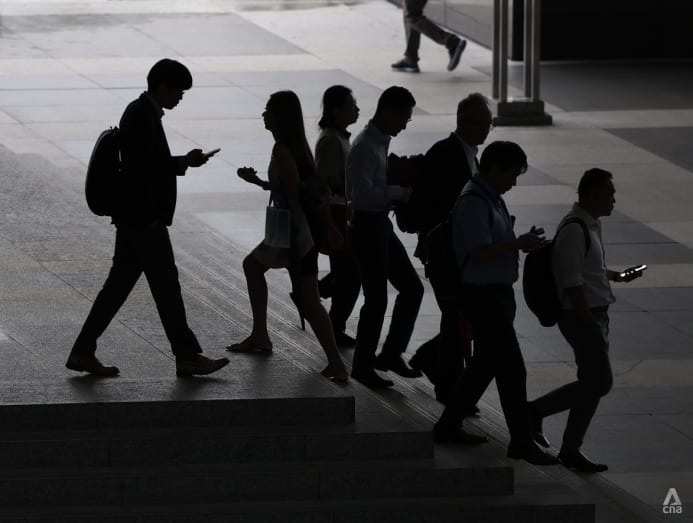
HOW COMPANIES ARE TRAINING WORKERS FOR AI
As it announced headcount cuts related to artificial intelligence (AI) technology, DBS is taking proactive steps to help its employees prepare for change.
The Singapore bank said that the reduction of its workforce by 4,000 will come from “natural attrition”, when the projects being worked on by the affected contract and temporary employees will be completed in the next few years.
Its chief data and transformation officer Nimish Panchmatia said that the bank started experimenting with AI as early as 2014.
“We have proactively identified about 13,000 staff members for upskilling or reskilling, including for AI and data-related skills. To date, around 10,000 have started their training,” he added.
Other banks did not specifically respond to CNA TODAY’s queries on whether there have been any headcount reductions relating to AI, but said that they have started training programmes related to it.
Over at OCBC, its head of group human resources Lee Hwee Boon stated that the bank’s focus on AI is two-fold: Providing workers with access to AI tools and training them.
"As of December 2024, close to 15,000 employees across the group have completed at least one AI-related training since the launch of AI learning programmes in 2019,” Ms Lee said.
Giving a glimpse of the scale of AI deployment in the bank already, OCBC's head of group data office Donald MacDonald said that about six million decisions in the bank are made by AI on a daily basis.
At United Overseas Bank (UOB), Mr Alvin Eng, head of enterprise AI and analytics transformation from its data management office, said the bank firmly believes that “humans will continue to play a critical role and will not be fully replaced”.
He also said that UOB was the first Singapore bank to trial the generative AI-powered productivity tool Microsoft 365 Copilot and has rolled it out to more than 600 employees.
The company has an internal AI and Data Analytics Academy as well, launched last year for employees to update their skills and it has partnerships with external partners for similar purposes.
Outside of banking and finance, Surbana Jurong said that it has been integrating AI into its facilities management solutions since 2017, among many ways that the infrastructure consulting firm taps AI to improve efficiency.
Mr Teo Say Leng, its executive director for digital technology and integrated solutions, said “While exact figures vary across applications and customers, we estimate savings of about 30 per cent in manual processes, allowing teams to focus on higher-value tasks.”
The firm is also working together with external partners to further scale up the use of AI and provide training for its employees in the AI field.
Over at market expansion services firm DKSH, about one-third of its staff members are "actively exploring or leveraging some form of AI assistance in their daily operations", it said.
GEARING UP FOR THE AI REVOLUTION
When it comes to their jobs, workers are expected to take ownership of their career progression, but companies also have a responsibility to ensure that their employees are not unnecessarily displaced by AI, analysts said.
At this point, there seems to be a gap in how effectively companies are preparing their workers to capitalise on AI.
Only 54 per cent of employees surveyed in Randstad Singapore’s latest Workmonitor report believed that their employers had provided them with opportunities to future-proof their skills in the face of industry changes.
Separately, a Salesforce-commissioned survey conducted by market research firm YouGov in 2023 found that 63 per cent of about 1,000 employees in Singapore have not received training from their companies on how to use generative AI ethically or safely.
Retrenching older workers and rehiring new ones with up-to-date skills may seem like a more expedient strategy, but it can also be in the interest of companies to enhance the skills of their existing workforce where possible, analysts said.
Another benefit of training workers to use AI instead of replacing them is that those who are already doing the work will be the ones who can best identify how AI can enhance the processes and improve operations, Mr Poh of KPMG said.
Mr Yash Thakker from cloud solutions and technology provider Searce, which includes AI-driven solutions among its offerings, said that some companies that were planning workforce reductions often encounter unexpected complexities during implementation.
“Organisations find that institutional knowledge, human judgment and adaptability remain irreplaceable, even while routine tasks get automated,” he explained.
“Singapore's tight labour market makes maintaining a reputation for thoughtful technological transitions particularly important for attracting future talent.”
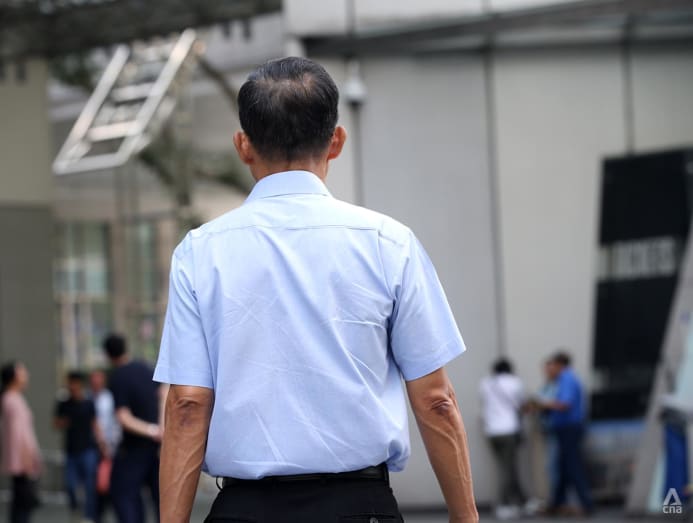
The Singapore government is fully aware of the disruption AI can cause workers.
In response to a question by Member of Parliament Tan Wu Meng (Jurong GRC) on the impact of AI on skilled work training last August, the Ministry of Trade and Industry said that the national industry transformation maps are dynamic and take into consideration environmental changes such as disruption related to generative AI.
“(Government) agencies carefully study the impact of AI on jobs and develop measures to support workforce transformation,” the ministry added, citing examples such as SkillsFuture-funded courses and career conversion programmes.
In his Budget statement last month, Prime Minister Lawrence Wong, who is also Finance Minister, acknowledged that AI will continue to get better and that new disruptive technologies will emerge in the future.
Although it is hard to predict the impact on specific industries and jobs, the underlying need for workers to be equipped with the right skills remains clear, he said.
“That’s why we are investing heavily in lifelong learning and have made significant moves to strengthen SkillsFuture as a key pillar of our social compact.”
In the meantime, some workers such as Mr Thomas who recently joined a tech company are bracing themselves for the inevitable disruption they might face in the near future.
He is doing part-time studies while working to level up his skills in a related field.
He is also looking to consolidate the knowledge and skills he has gained from the various projects he has handled and to feature them prominently on his online curriculum vitae to build his personal brand.
“Personally, I feel like I need to be ready for when AI disruption comes and position myself well to be relevant in such a climate.”

















